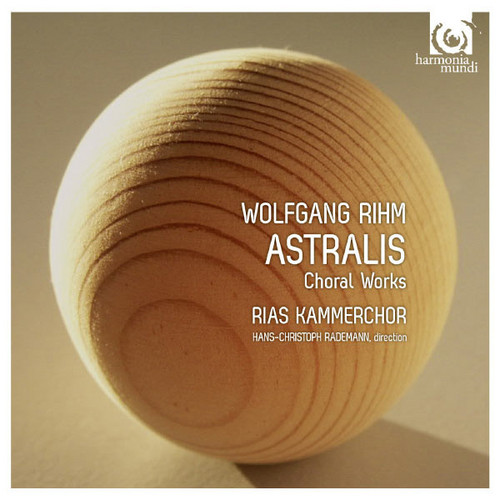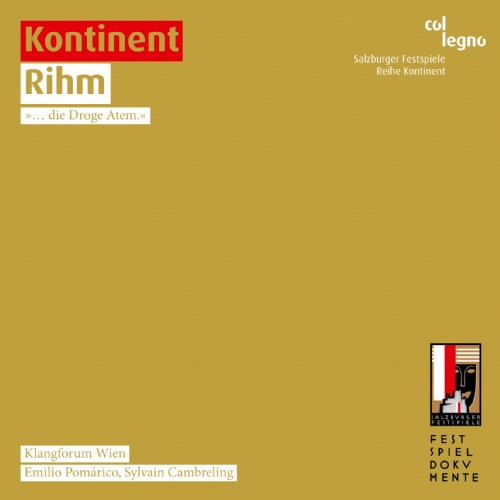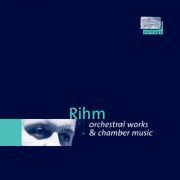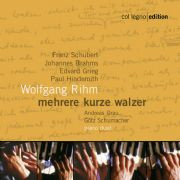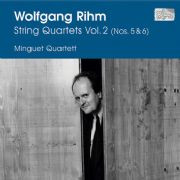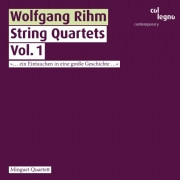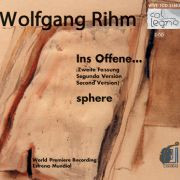Wolfgang Rihm
Astralis / Choral Works
2012 release ** "Complex and expressive vocal writing, blending elements of traditional choral music with more modern, experimental techniques. Wolfgang Rihm has not usurped the immense reputation he enjoys in contemporary artistic life. The works of this worthy heir to the German musical tradition invariably oscillate between monumentality – immutable blocks of sound – and ethereal movement – instrumental or vocal lines opening towards the infinite. His choral music is characterised by a syncre…
Kontinent
2012 release ** "Number 4 of the Salzburg Festival “Kontinent” series was dedicated to Wolfgang Rihm. We have compiled a selection of the works for your conven- ience – including a first recording! Wolfgang Rihm once claimed that the most appropriate statements about his oeuvre are his own compositions. In 2010 the Salzburg Festival adopted this approach. The result was a “Kontinent Rihm” which placed the manifold tone colors and modes of expression created by the former Stockhausen student into…
3 Liederzyklen
Wolfgang Rihm sets poems from Heiner Müller, Hermann Lenz and Rainer Maria Rilke to music. Listen to a living document about one of the most important lied composers of our time.Wolfgang Rihm’s confrontations with the written word hold a special place among the more than 400 compositions he has written in the course of his long career. The composer, highly versed in reflecting on his own approaches and techniques, expands the textual material instead of labeling it, adding additional levels of m…
Orchestral Works & Chamber Music
Music and the freedom of art: Wolfgang Rihm's aim is not to produce empty sound structures but to hit the bull's eye with direct and unexpected force.
Musica Viva 13
In his Dis-Kontur and Sub-Kontur, the young Rihm strongly revolted against the emotional coolness he en-countered in the style of the musical avant-garde.
mehrere kurze walzer
Franz Schubert may not have been an expert dancer, but he certainly was an extremely skilled composer of dance music. Most of his numerous dances – often miniatures comprising only a few chords – were improvisations created for special occasions, such as house parties. And many of these impromptu waltzes were noted down by Schubert later, including several pieces for piano four hands. Brahms, who held Schubert's music in high esteem, remained faithful to his own majestic musical language in his …
String Quartets Vol 4
The most recent of his compositions which Rihm called “string quartets” date back a few years already, with a gap in the enumeration still waiting to be filled (the eleventh quartet is missing). Even a cursory comparison of the three works’ beginnings reveals Rihm’s “ability to find new and distinctly characteristic solutions for each piece, which, each in their own way, put a stamp on what is to follow.” (R. Frisius) The gentle pizzicati of Quartet No. 10 and the muted, shadowy chord of No. 12 …
String Quartets Vol. 3 (Nos. 7-9)
String Quartets Nos. 7, 8 and 9 suggest that Rihm has finally left behind the neo-romantic expressive pathos of earlier compositions: “Real or virtual allusions to the past are rarely to be found any more – and the same holds of the luscious and revelling strings. Remnants of tonal harmony are, with a few exceptions, almost completely obliterated. … Instead, new constellations come to the fore, emancipated from traditional conceptions of sound – heeding, in particular, the principle of polarity …
String Quartets Vol. 2 (Nos. 5 & 6)
That the two single-movement string quartets No. 5 (“Ohne Titel”) and No. 6 (“Blaubuch”), composed in 1981/83 and 1984, belong to the most passionate of Rihm’s quartets is due to their restless vigor. This impulsive approach is of course always present in his music. But even the tempo indications “fast, restless” and “fast und free” suggest a certain stringency - which is fully realized in the pieces. A sense of inner disquiet pulls the listener like a maelstrom into a sea of commotion, of stru…
String Quartets Vol.1
This CD with … the first four string quartets reflects the interesting path of Rihm’s artistic development. The Minguet Quartet approaches the first two, shorter, works with audibly high concentration without relinquishing, in the frenzy of high-energy playing, their own cultivated sound born from quartet tradition. Here, Rihm’s third quartet, with its not unproblematic subtitle ‘Im Innersten’ (‘at the innermost core’), does not become self-indulgent navel-gazing, the display of sounding extremi…
Ins Offene... / sphere
Enclosing the listener in sonic space: This is what Beat Furrer carried to extremes in his FAMA (col legno 20612), about 15 years after Rihm, by actually placing his audience in a “building of sound”. For Wolfgang Rihm, a sonic space was something less concrete and more indirect: “Organically sprawling strings of sound should be woven around the listener, circling her from different directions. In this way, the listener is not left to her own devices while opening up to it; the piece itself come…
